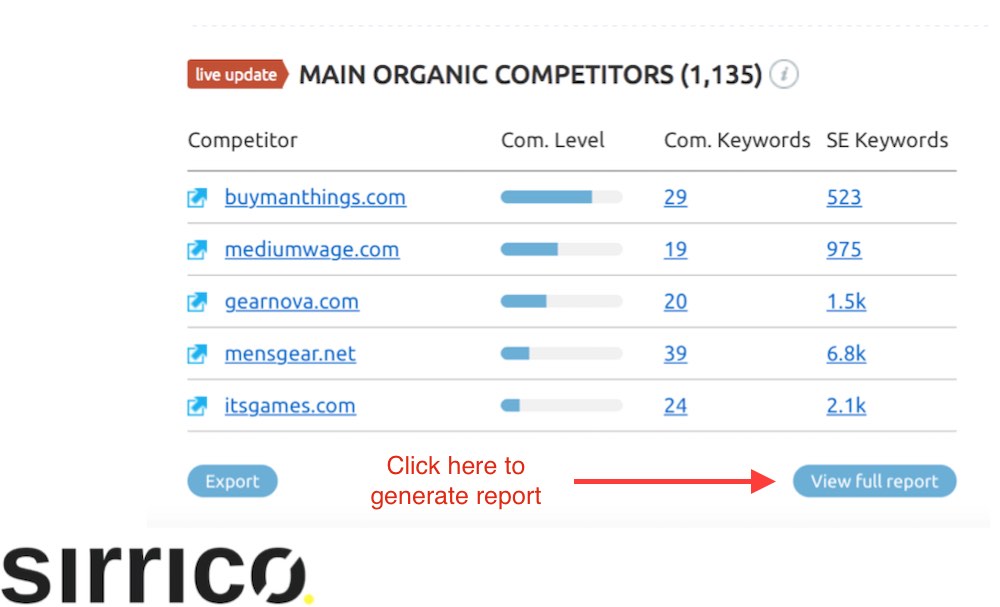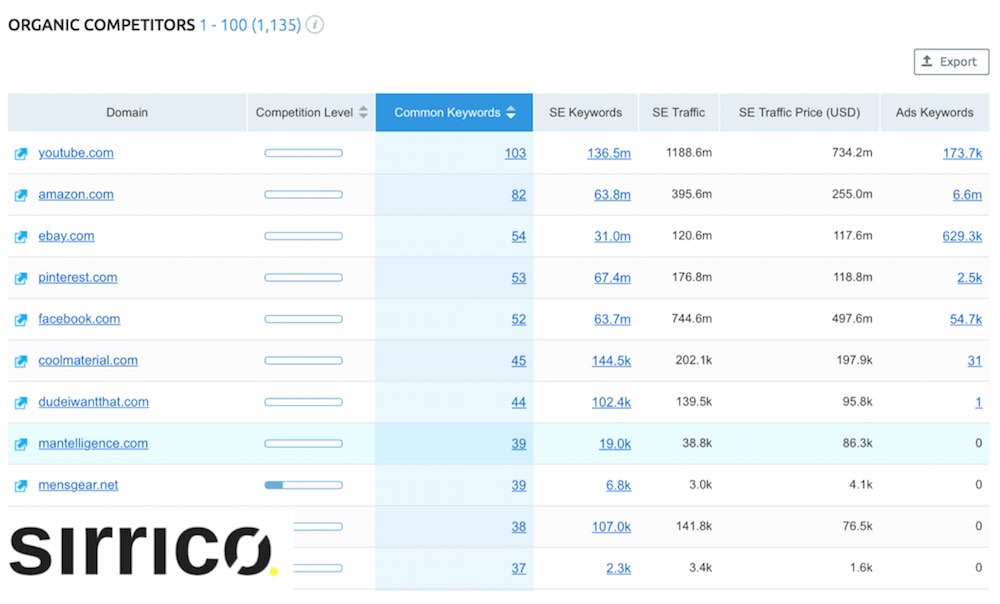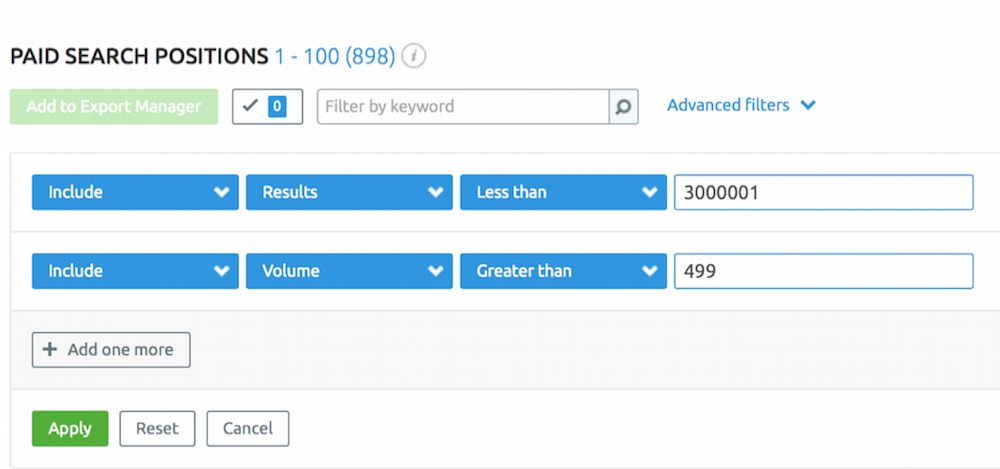Billions of dollars are spent annually by advertisers. In 2016, $90.3 billion was spent by advertisers on Adwords campaigns alone. This guide will teach you how to identify and target specific terms that advertisers are buying traffic for. The objective here is to identify niche opportunities within your industry based on what others are targeting.

This analysis is something that can be done for service-based businesses, companies creating/selling their own products, as well as those partaking in affiliate marketing. Regardless, the process remains the same. Today I’ll be covering the process and using an affiliate marketing site as an example.
Why do it?
The main reason you’ll want to perform this task is because it allows you to easily “snipe” or “identify” opportunities within a market based on money that competitors are spending to drive traffic and boost conversions.
I know what you’re thinking right now, “But I don’t have any money to compete against them.” Fear not, I’m not suggesting you compete in order to win here. Keep reading and you’ll understand what I’m referring to, why, and what doors it can open up.
Steps To Analyze Competitor Media Buys
I’ve tried to share the specific steps to take if you want to tap into the efforts by competitors trying to buy traffic to make more conversions.
1. Log into SEM Rush
If you don’t have a SEMRush account, then you’re going to want to purchase one. I believe the lowest subscription costs $69 and it’s well worth it.

2. Enter Your Domain
Once logged in, you’re going to want to enter the name of your own domain. In this case, I’ll be using a fellow affiliate marketers website called ThingsMenBuy.com. Yes, I do this same process for SEO clients.

3. Head to the Organic Competitors Section
This section is located half way down the page. You’ll want to click the “View full report” button to display all the main organic competitors. These are sites that competitors are running. They’ve identified a commonality in keywords between your site and their site.

A page should populate that looks similar to the screenshot below. Various pieces of competitor data have been collected. here. The report displays competitor domain name, competition level, common keywords, search engine keywords, estimated search engine traffic, price of said traffic, and the number of keywords competitors are bidding on in Adwords campaigns. In this particular example, you’ll see that there are 1,135 competitors that ThingsMenBuy.com is competing with for traffic.

4. Export The Report
Export a CSV of the report by clicking the “Export” link and hitting the “Save” button. This allows you to locally save the full report. You’ll need this to identify specific competitors spending money on Adwords campaigns.

5. Apply Filters & Sort
Once exported, you want to open the CSV and begin to apply a few filters to the report. The first thing you want to do is filter out column G “Adwords Keywords” to omit those with zero results.
This will eliminate all competitor sites that aren’t spending money to drive traffic to their website. I personally like to clean up the report to make it easier to read and use the data.
You’ll also want to sort the data based on “Competitor Relevance.” There are of course other data types that you can sort by but I tend to start with “Competitor Relevance.”

5. Highlight Competitor Sites
Start highlighting the sites that you’ll eventually want to research further. What you’re doing is identifying websites that are closely related to your site within your niche. These sites might be offering the same services as you or selling the same types of products.
They may be selling comparable products or substitutes. In this particular example, we’re looking for sites that might be selling products our visitors might buy. Don’t be afraid to spend a decent amount of time combing through the results.

6. Research Highlighted Domains
Using your excel spreadsheet, filter those that you’ve highlighted. You’ll need to reference this list using SEMRush so keep it readily available.
Choose one of the highlighted sites from the excel spreadsheet. Head back to Semrush.com and search for that domain by doing a simple CTRL + F search.
Once you’ve identified where that domain is within the list, click on the number which represents the “Ads Keywords” for that domain.

7. Sort By Volume
Sort the terms by volume and look for #1 positions in which they are ranking. What you’re trying to do here is identify terms that competitors are bidding on, trying to rank in position #1 within Adwords.
You’ll want to look for terms that have less than 3,000,000 results and more than 500 searches a month. This is the criteria that we’ve set in to best identify opportunities within the market. Apply filters within SEMRush using the Advanced filters by including results with less than 3,000,001 and volume greater than 499.

You’ll end up with a report that looks something like the screenshot below…
In this example below, I’m sorting and reviewing keywords that competitor, gameroomguys.com is bidding for. As you can see, they are buying traffic for “bubble hockey table,” “star wars pinball,” “claw machine for sale,” and many other terms.

Now what?
So you’ve identified terms that competitors are spending money on ads. Now what your objective here is to create content that’s relevant to specific terms they’re bidding on. You’re trying to rank organically and tap into that traffic without spending money on media buys. Creating content around very specific terms is the best way to compete with them without getting into a bidding war.
From here, you’ve got a few choices:
Opportunity A) You can search online to see if the particular site that is selling the product has an affiliate program. If so, and if you’re an affiliate marketer, you can apply to the affiliate program and begin sending them traffic.
Opportunity B) You can search the Internet for manufacturers or suppliers of the product and ask if they have an affiliate program. Don’t get disappointed if they do not. Most of the time you’ll be able to find a substitute product that does.
Opportunity C) You can ask the manufacturer if they’d be willing to set up some sort of wholesale or drop shipping agreement with you to sell the product directly. Should you choose to take this route, you’ll be able to sell the product on your site and have the wholesaler/dropshipper send the product directly to the customer.
Sounds like a lit of work right?
Well, if you’re looking for someone to do this for you, let’s talk. We do this for just about every client that hires us to do SEO or PPC work. Fill out the form below to learn more!